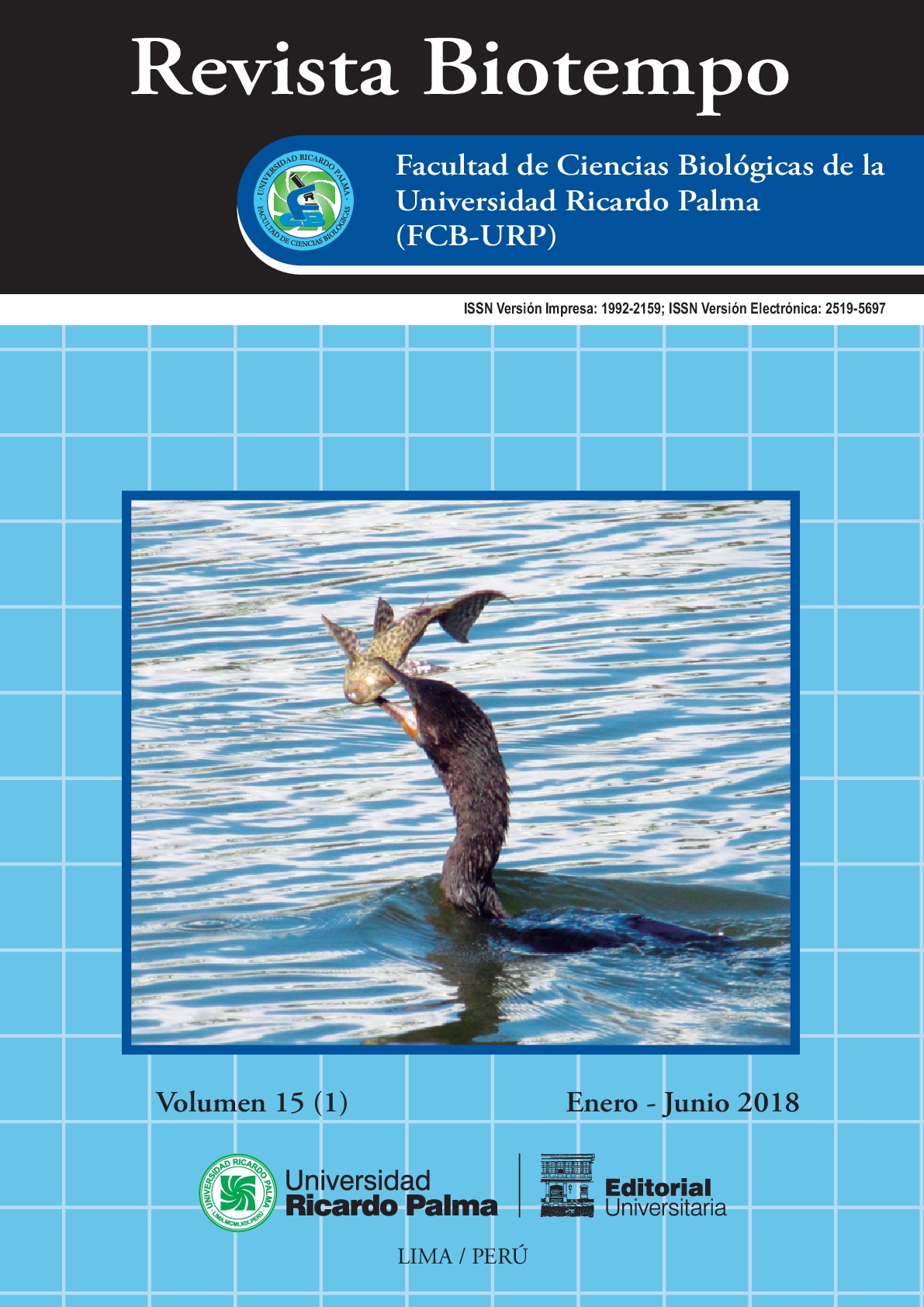IMPACT OF CLIMATE VARIABILITY AND AGRARIAN SYSTEMS IN THE CULTIVATION OF SWEET GRANADILLA (PASSIFLORA LIGULARIS JUSS) OF OXAPAMPA, PASCO, PERU
DOI:
https://doi.org/10.31381/biotempo.v15i1.1694Abstract
Th e sweet granadilla (Passifl ora ligularis Juss) (Passifl oraceae), native to Tropical America, can be found wild in Peru.
However, given the vulnerability of agricultural systems, climate variations, and its relevance to the economy and food
security, it is important to evaluate the impact of climate variability and agricultural systems on the cultivation of
sweet granadilla P. ligularis from Oxapampa, Pasco, Peru. For this purpose, information was collected on the climatic
variables from the National Service of Meteorology and Hydrology (SENAMHI) of Peru as well as variables related
to crops, such as cultivated area and the yield of sweet granadilla cultivation in diff erent productive plots. Th e annual
fi gures obtained from the Statistical Compendium of the Regional Statistical System-INEI of the Department of Pasco
were used. Information was obtained through surveys of farmers of the Oxapampa locality and from professionals of
institutions related to the cultivation of granadilla: Regional Directorate of Agriculture and the National University
Daniel Alcides Carrión (UNDAC) of Peru. Climatic factors had a positive impact on the yield of granadilla fruits, and
it was the highly adaptable Colombian ecotype (“Colombian”) that improved the yield of the crop per hectare, which
varied from 5 tn / ha / year to a range of 10 to 15 tn / ha / year. However, these factors had a negative impact on local
ecotypes which, despite being the source of genetic resistance to pests and diseases, were displaced by the introduced
ecotype. Given the superior profi tability of the cultivation of sweet granadilla on livestock, changes were generated in
the use of land, strong indiscriminate felling of native forests, decrease in pasture area, milk production, and in products
derived from primary sources.










